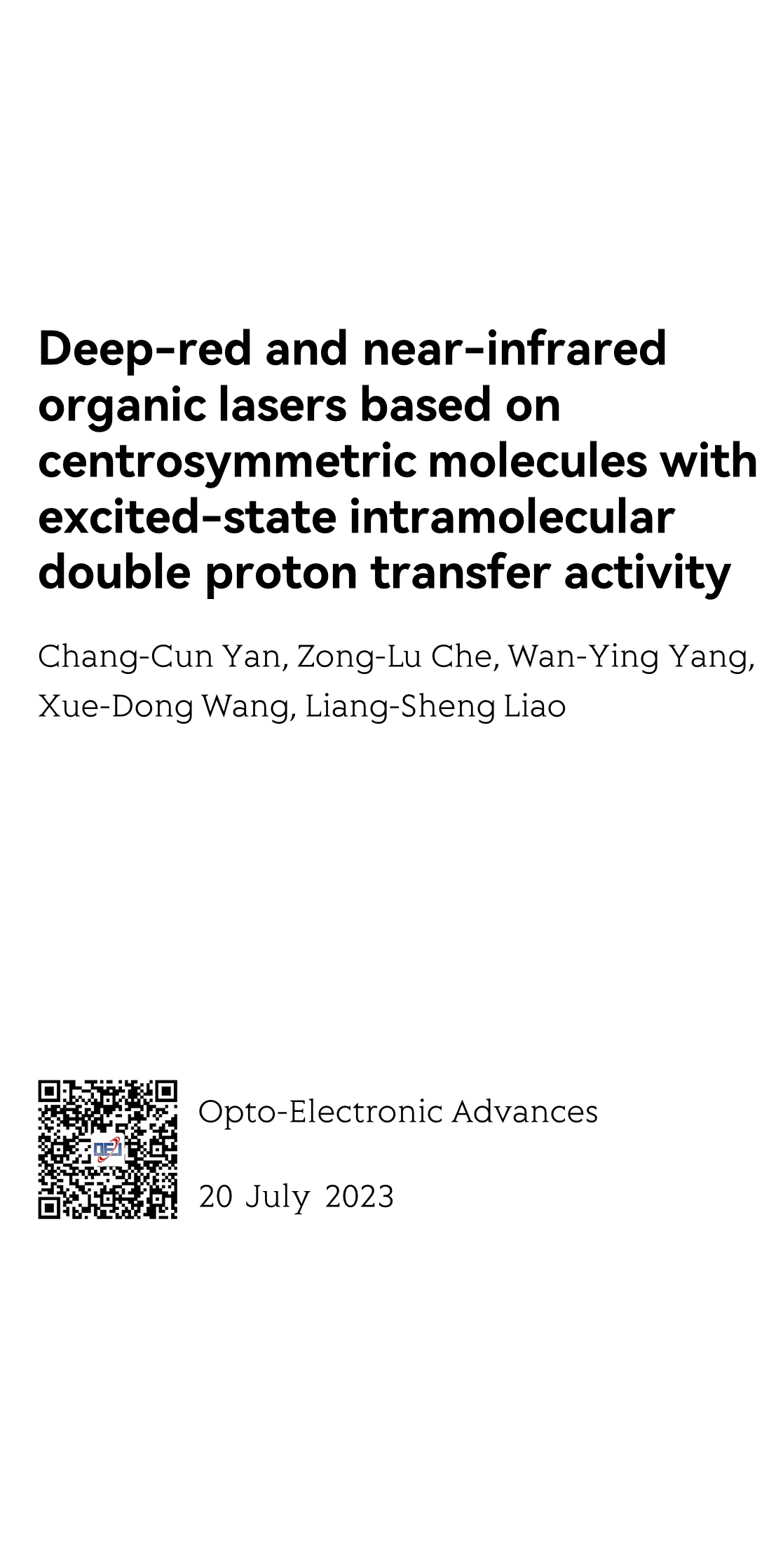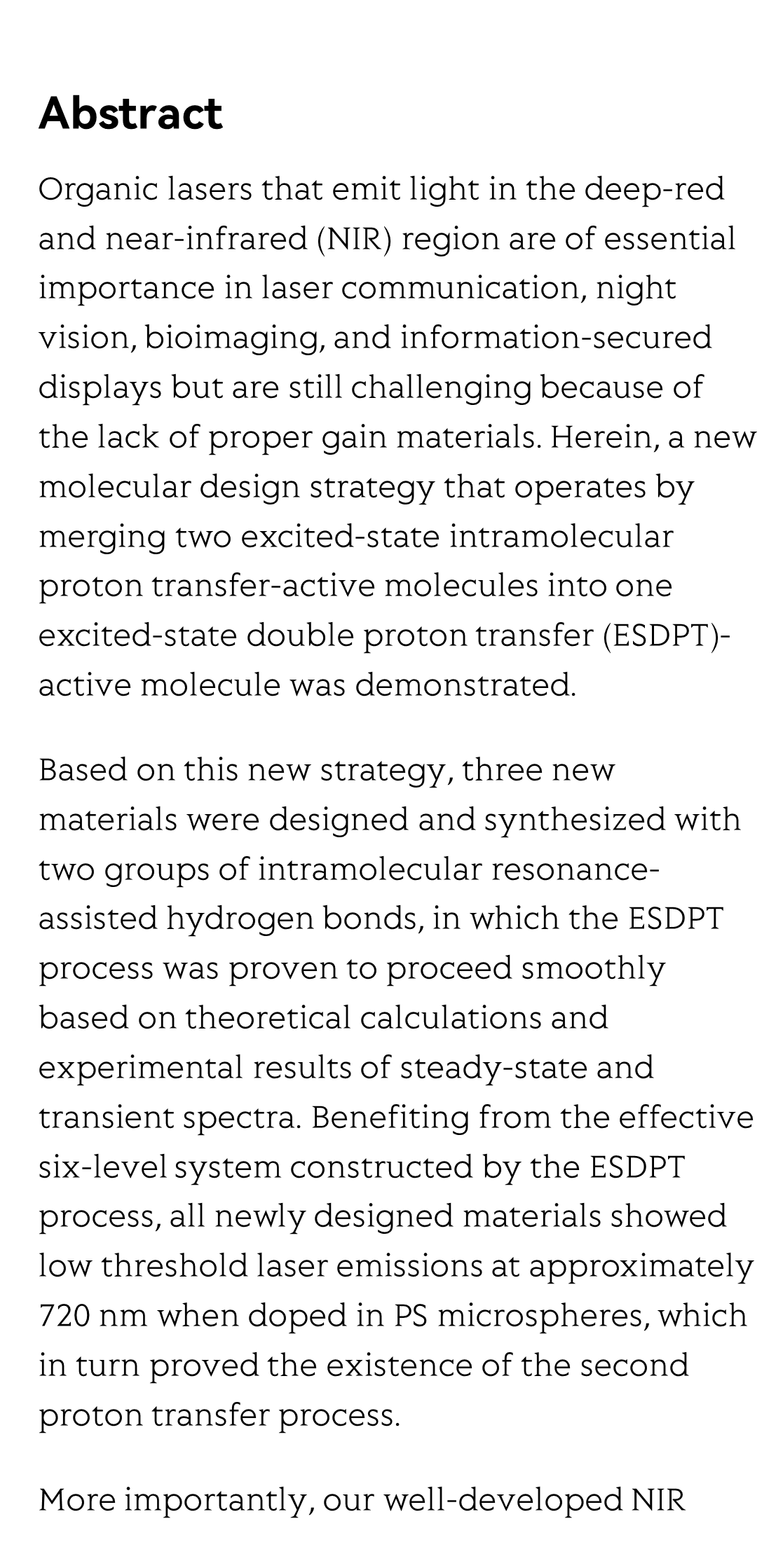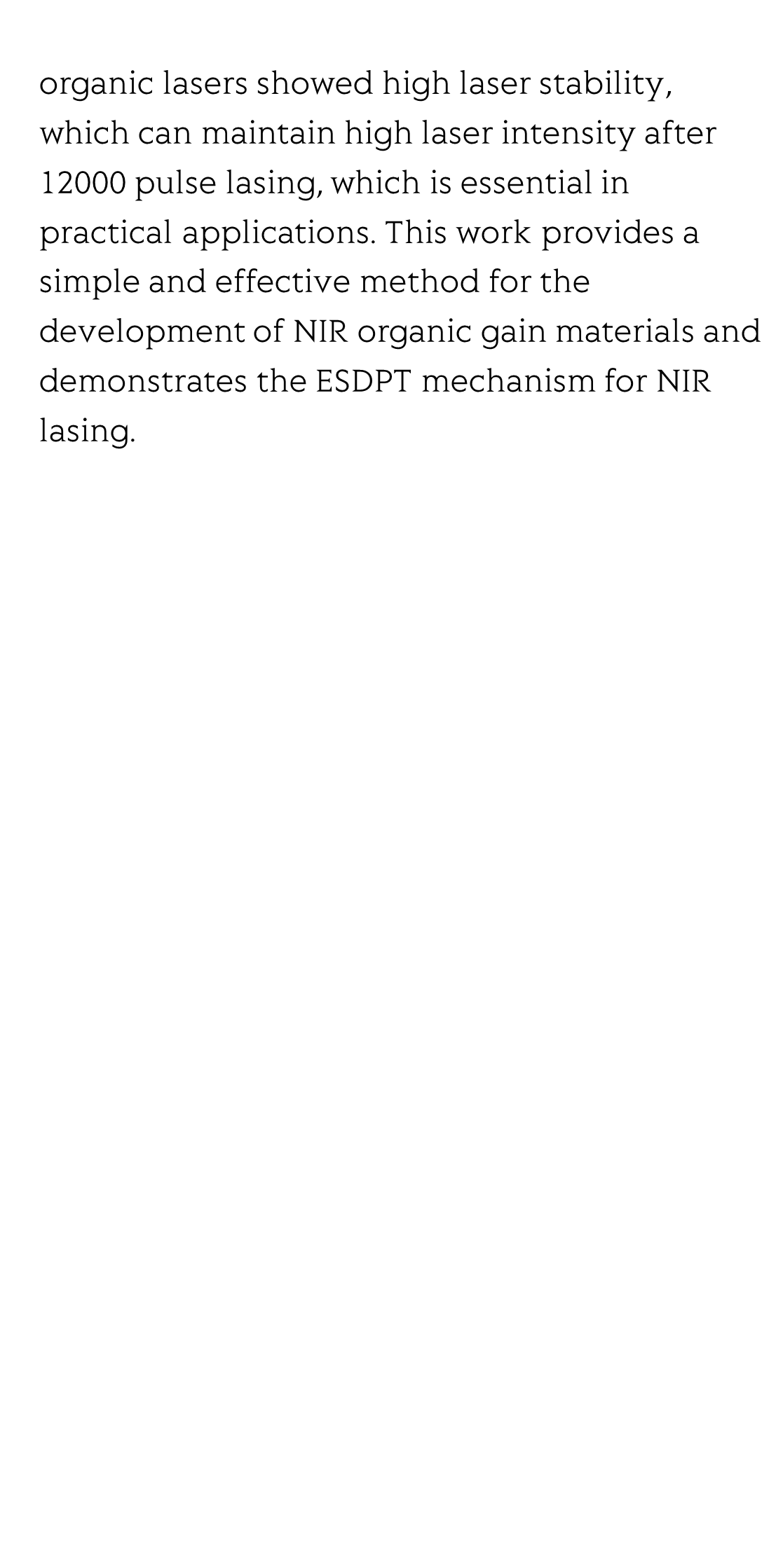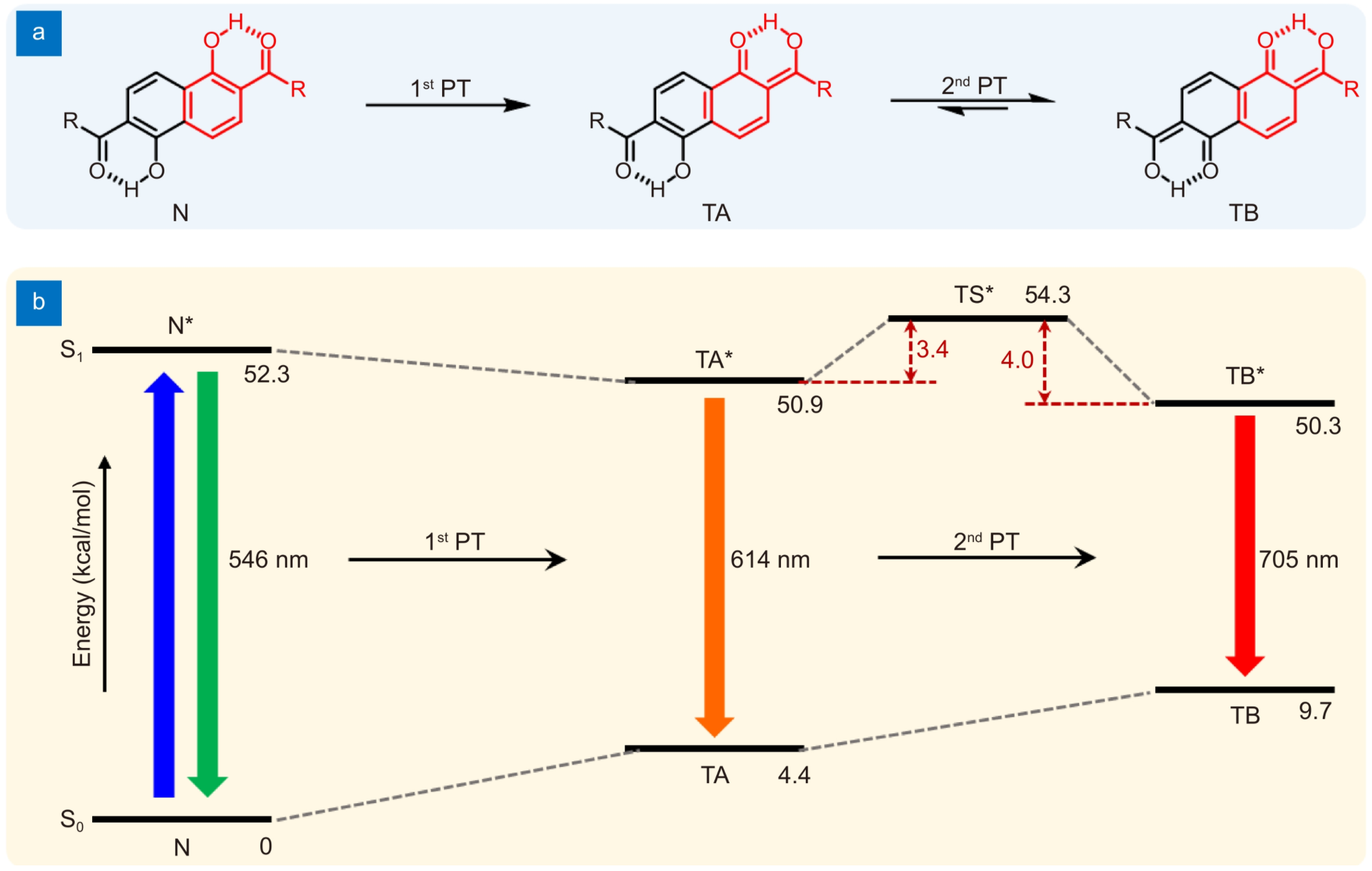(Peer-Reviewed) Deep-red and near-infrared organic lasers based on centrosymmetric molecules with excited-state intramolecular double proton transfer activity
Chang-Cun Yan 闫长存 ¹ ² ³, Zong-Lu Che 车宗路 ², Wan-Ying Yang 杨婉莹 ², Xue-Dong Wang 王雪东 ², Liang-Sheng Liao 廖良生 ¹ ²
¹ Macao Institute of Materials Science and Engineering, Macau University of Science and Technology, Taipa, Macau SAR 999078, China
中国 澳门 澳门科技大学澳门材料科学与工程研究院
² Institute of Functional Nano & Soft Materials, Jiangsu Key Laboratory for Carbon-Based Functional Materials & Devices, Joint International Research Laboratory of Carbon-Based Functional Materials and Devices, Soochow University, Suzhou 215123, China
中国 苏州 碳基功能材料与器件国际合作联合实验室(苏州大学)江苏省碳基功能材料与器件高技术研究重点实验室 功能纳米与软物质研究院
³ Jiangsu Engineering Laboratory of Novel Functional Polymeric Materials, Jiangsu Key Laboratory of Advanced Negative Carbon Technologies, College of Chemistry, Chemical Engineering and Materials Science, Soochow University, Suzhou 215123, China
中国 苏州 江苏省新型高分子功能材料工程实验室 苏州大学材料与化学化工学部 江苏省先进负碳技术重点实验室
Opto-Electronic Advances, 2023-07-20
Abstract
Organic lasers that emit light in the deep-red and near-infrared (NIR) region are of essential importance in laser communication, night vision, bioimaging, and information-secured displays but are still challenging because of the lack of proper gain materials. Herein, a new molecular design strategy that operates by merging two excited-state intramolecular proton transfer-active molecules into one excited-state double proton transfer (ESDPT)-active molecule was demonstrated.
Based on this new strategy, three new materials were designed and synthesized with two groups of intramolecular resonance-assisted hydrogen bonds, in which the ESDPT process was proven to proceed smoothly based on theoretical calculations and experimental results of steady-state and transient spectra. Benefiting from the effective six-level system constructed by the ESDPT process, all newly designed materials showed low threshold laser emissions at approximately 720 nm when doped in PS microspheres, which in turn proved the existence of the second proton transfer process.
More importantly, our well-developed NIR organic lasers showed high laser stability, which can maintain high laser intensity after 12000 pulse lasing, which is essential in practical applications. This work provides a simple and effective method for the development of NIR organic gain materials and demonstrates the ESDPT mechanism for NIR lasing.
Data-driven polarimetric imaging: a review
Kui Yang, Fei Liu, Shiyang Liang, Meng Xiang, Pingli Han, Jinpeng Liu, Xue Dong, Yi Wei, Bingjian Wang, Koichi Shimizu, Xiaopeng Shao
Opto-Electronic Science
2024-02-24







